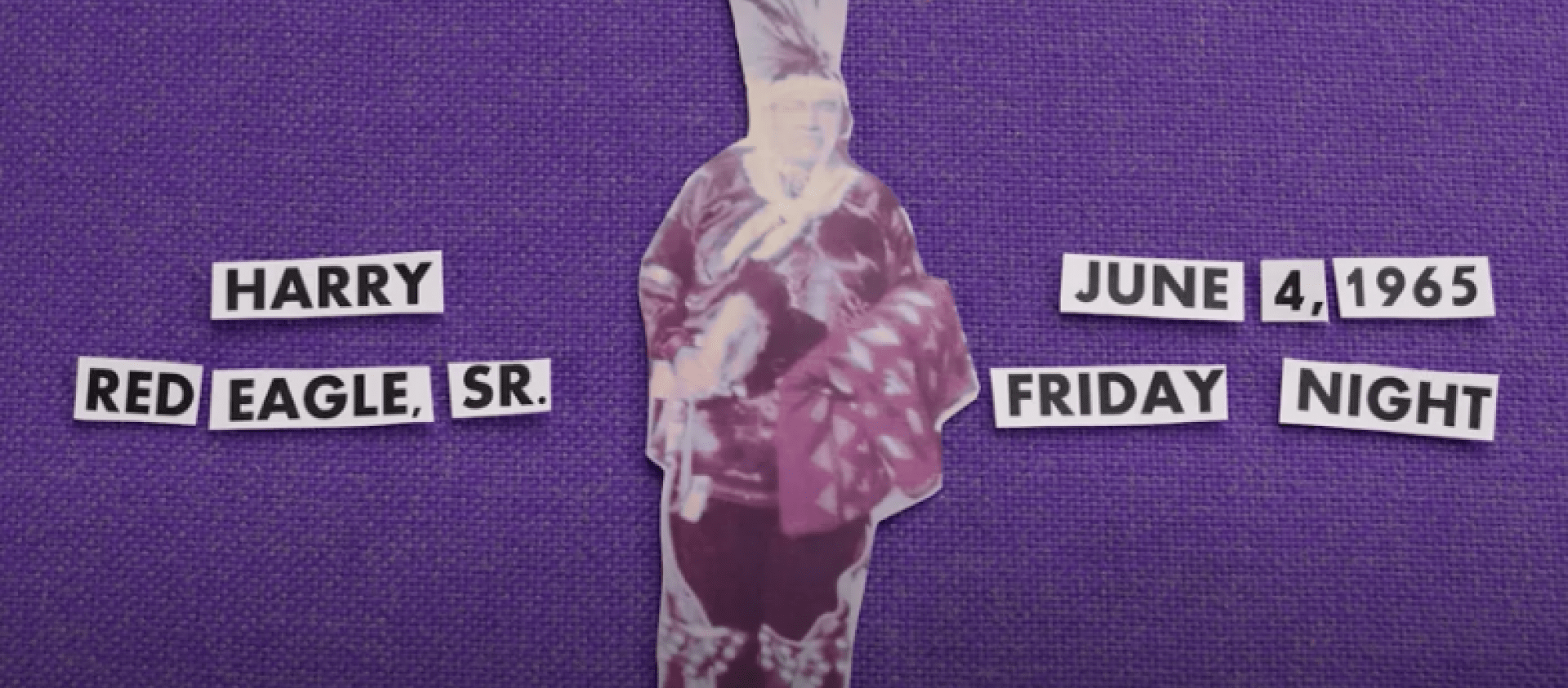
Proudly submitted by: Kelly Red Eagle Dyer, Paul Red Eagle, Walisa Red Eagle, Harry Roy Red Eagle Jr.
Watching the tv show “Finding Your Roots” makes it look easy to discover information about your family. Native American people, including us Osages, have lived on this land for generations. Our task at hand seems to often come to a dead end. Creating a family tree we enlist the help of records gleaned from the Osage Agency and the Bureau of Indian Affairs is often all we have to go by. In a newspaper obituary dated November 3, 1929, a statement is made about the passing of our great-great-great grandfather, Che-Sho-Shin-Kah or Henry Red Eagle, allottee number 531. Henry’s father is listed as Ne-Ko-Kun-Tsa with no identification of his mother but possibly she was Hlu-Ah-To-Me. It describes his passing as the ever-thinning circle of the true, old-time Indians. He was born about 1840 in Kansas and after coming to Indian Territory, he married Rosa Pryor or Sah-Me-Tsa and they made their home on Bird Creek near Barnsdall. They had one son named Paul Red Eagle, number 533. Paul married Cecelia McCarthy, number 534, and they became parents to several children.
Our great-grandfather, Harry Red Eagle Sr., was their oldest child. He was born September 15, 1902, in Barnsdall. He attended school at Barnsdall and later attended the Osage Boarding School at Pawhuska. As a young man, he would ride his horse to Pawhuska to visit friends and relatives. Students who attended the boarding school were assigned jobs on the campus. He worked in the bakery. He would tell stories about the boys having flour fights while ‘working’. His future wife also attended the boarding school and lived in the girls’ dorm and she was assigned to work in the laundry. He said that when the girls went walking by, the boys would grab a handful of dough, run to the door, and break off pieces of dough and throw them at the girls. The girls would squeal and run, I guess that was flirting because the girls never stopped walking by there. So I suppose he was a typical teenager.
He married classmate Mary Pappin on December 3, 1918, in Hominy. Harry’s original allotment was located in Barnsdall and Mary’s was south and west of Hominy near Black Dog’s camp. Her parents were E-Gron-Kah-Shin-Kah and Hun-Pah-To-Kah. Harry and Mary established their home on her allotment. Like his grandfather, Henry, he became a rancher and raised prize horses. He was well known as a trainer and horse trader. Harry was always steeped in his Osage culture and traditions. He was a roadman in the Native American Church at the family church in Barnsdall. He served on the Osage Tribal Council and was a charter member of the National Congress of American Indians. He served as the head committee man for the Hominy In-Lon-Schka committee for many years.
Harry and Mary had three children: Cecelia Red Eagle Thornton, Harry Red Eagle Jr., and Joseph Harlin Red Eagle, who passed away at age three. They were blessed with ten grandchildren and were always an integral part of their lives. Each summer they would spend more time with Harry and Mary it seemed than they did with their parents. They heard their grandparents speak to each other in the Osage language and even knew when they were arguing in Osage by the tone of their voices. The 31st Osage Minerals Council entered a national contest featuring an overview of the Osage Tribe and their cultural activities. In the introduction Harry Red Eagle Sr. can be heard speaking as the head committee man from Hominy conveying his gratitude to the Grayhorse committee for their hospitality during their dance. Our family swells with pride when we hear his voice today. Our great grandfather passed away on August 20, 1965, at the age of 62 years, 11 months, and 5 days.
We are proud to be descendants of this Red Eagle lineage. As written in Henry Red Eagle’s obituary, it is stated that long before the Osages became wealthy from oil, Henry Red Eagle was living industriously on his large ranch raising cattle, grain, and setting an example for other Osages to follow. We’re proud of this heritage.

